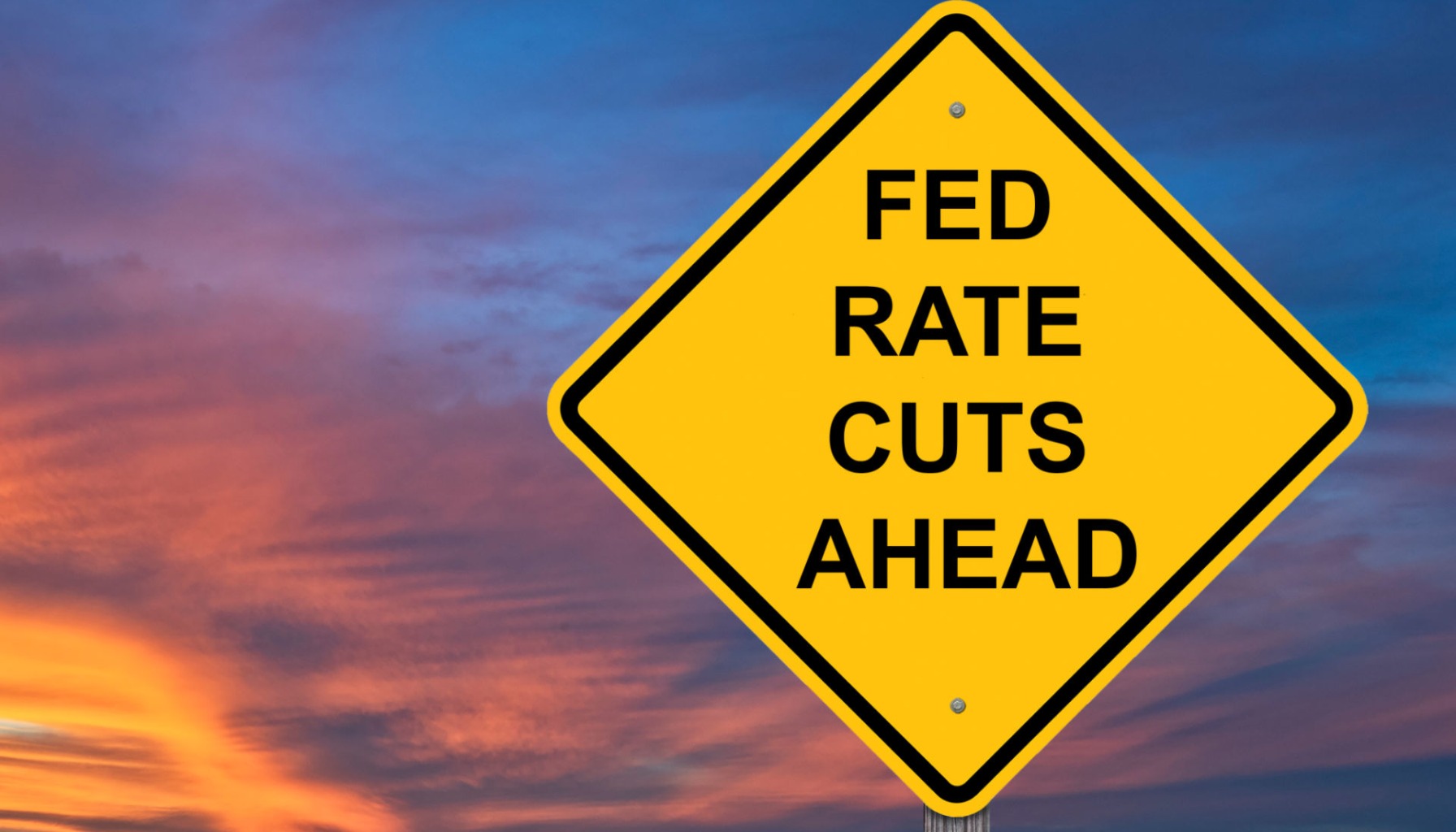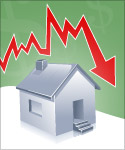In his much-anticipated August 22, 2025, Jackson Hole speech, Powell hinted at Federal Reserve rate cuts, acknowledging a shift in economic risks, but he made it clear that the exact timing remains a big question mark, leaving us all waiting for more data. For those of us keeping a close eye on the economy, this wasn't a firm promise, but it was certainly a strong signal that the wind might be changing direction.
Powell Hints at Federal Reserve Rate Cuts in Jackson Hole Speech, Timing Unclear
Every year, the quaint, majestic setting of Jackson Hole, Wyoming, becomes the temporary capital of the financial world. It's where the Federal Reserve Bank of Kansas City hosts its annual Economic Policy Symposium, bringing together central bankers, economists, and policymakers from around the globe. This isn't just a fancy gathering; it's a crucial stage, often used by the Federal Reserve Chair to drop hints or even make big announcements about the future of our money.
I've always viewed Jackson Hole as the Fed's most significant “tell-all” moment outside of official meetings. Think of it like a coach's pre-game press conference: while they won't reveal their entire strategy, they often give enough clues for seasoned observers to understand the general direction. In 2024, Powell used this very platform to confirm that rate cuts were coming, setting a precedent. So, when he stepped up to the podium in 2025, the world leaned in, hoping for another clear sign. And he delivered, albeit with careful, measured words.
Deciphering Powell's 2025 Address: A Delicate Balancing Act
On August 22, 2025, Chairman Powell delivered what might be his final Jackson Hole speech as Fed Chair, titled “Economic Outlook and Framework Review.” As I listened, it became clear his focus was, as always, on the Fed's dual mandate: keeping prices stable (aiming for a 2% inflation rate) and making sure as many people as possible have jobs (maximum employment). But the economic picture he painted was complex, almost like a puzzle with pieces that don't quite fit together perfectly.
Shifting Risks: The Labor Market Cools, But Inflation Lingers
Powell highlighted a shifting economic balance. On one hand, the job market, which had been red-hot for so long, was starting to show signs of cooling. The July jobs report, for instance, was weaker than expected, with only 35,000 new jobs added. Worse, previous months' numbers for May and June were revised downwards, suggesting the slowdown might be more pronounced than initially thought. The unemployment rate, while still historically low at 4.2%, has climbed almost a full percentage point from its lowest point. As an observer of economic cycles, I find that particular statistic concerning, as Powell himself noted, such a rise often happens right before or during an economic downturn. It's like the engine light coming on in your car – it might not be a huge problem yet, but it deserves immediate attention.
On the other hand, the monster of inflation still hasn't been completely tamed. Prices are still stubbornly above the Fed's 2% target. And to add another layer of complexity, President Trump's recently imposed tariffs are, in my opinion, throwing a wrench into the works. While Powell suggested their inflationary impact might be “short-lived,” I believe any added pressure on prices, especially from policy decisions, makes the Fed's job much harder. It's like trying to put out a fire while someone keeps tossing in kindling.
The Dual Mandate Under Pressure
This delicate situation puts the Fed's dual mandate under immense pressure. How do you support a strong job market when it's slowing down, while simultaneously fighting inflation that just won't go away? Powell acknowledged this difficulty, stating that “The balance of risks appears to be shifting.” This phrase, coming from the Fed Chair, is code for: “We're looking at things differently now.” It means the current policy of having the federal funds rate at 4.25%–4.5%—a restrictive stance meant to slow things down—might need to change.
Data-Dependent Stance: Why No Firm Timeline?
Despite the clear signal, Powell was careful. He avoided giving a firm commitment to a specific timeline, like for the upcoming September 17–18 Federal Open Market Committee (FOMC) meeting. This “data-dependent” approach is Powell's hallmark. He's essentially telling us, “Don't hold me to a date; hold me to the numbers.”
In my view, this cautious approach is smart. The global economy is a complex beast, and unexpected events can change the picture overnight. Committing too early would paint the Fed into a corner. He emphasized the Fed's commitment, saying, “We will do everything we can to support a strong labor market as we make further progress toward price stability.” To me, this shows a deep understanding of the human element of the economy – it's not just about numbers, but about people's jobs and their ability to afford daily necessities.
My Take on the Economic Puzzle: What I See Happening
From my vantage point, the economic situation in 2025 feels like we're walking a tightrope. The labor market, while still strong by historical standards, is definitely cooling. When I see numbers like 35,000 new jobs and downward revisions, it makes me wonder if companies are getting nervous. Are they seeing a drop in demand? Are they becoming more cautious about hiring? This isn't necessarily a bad thing if it helps bring inflation down without a big surge in unemployment. However, if this trend continues, we could quickly find ourselves in a recessionary environment, and that's precisely what the Fed wants to avoid.
The inflation picture is even trickier. We've come a long way from the peak, but getting that last bit down to 2% is proving to be incredibly difficult. My strong opinion is that the tariffs President Trump implemented, while perhaps intended to protect domestic industries, are creating an unnecessary headwind for the Fed. Tariffs often lead to higher prices for imported goods, which then trickle down to consumers. Even if the impact is “limited,” as Powell suggested, it still adds a layer of uncertainty that complicates the inflation fight. The expectation of the core Personal Consumption Expenditures (PCE) price index at 2.6% in August 2025 is still too high for comfort, and it means the Fed's work is far from over.
I also believe that Powell's emphasis on “shifting risks” is a nod to the fact that the risk of doing too much (keeping rates high for too long) might now outweigh the risk of doing too little (cutting rates too early). It's a subtle but significant pivot that tells me the Fed is genuinely concerned about the possibility of tipping the economy into a recession if they don't ease up soon.
The Market's Enthusiastic Nod: What Happened on Wall Street
When Powell speaks, Wall Street listens. And this time, they didn't just listen; they reacted with enthusiasm. His comments, seen as “dovish-leaning” (meaning he favors easier monetary policy), sparked a noticeable rally.
- Stock Market Soared: The S&P 500 climbed 1.6%, the Nasdaq shot up 2.1%, and the Dow Jones Industrial Average gained a strong 2%, even approaching a record high. Investors clearly interpreted Powell's words as a strong hint that a rate cut was on the horizon, likely in September. When interest rates go down, borrowing becomes cheaper for companies, which can boost their profits and make their stocks more attractive.
- Bonds and the Dollar Fell: The two-year Treasury yield dropped nearly 10 basis points to 3.69%, and the 10-year Treasury yield fell to 4.27%. Similarly, the U.S. dollar weakened against major currencies like the euro and yen. This is typical market behavior when rate cuts are expected. Lower bond yields mean bonds are less attractive, and a weaker dollar can make U.S. exports cheaper.
- Rate Cut Probabilities Spiked: Before Powell's speech, the CME FedWatch Tool showed markets were pricing in a 72%–85% chance of a 25-basis-point (bps) rate cut in September. After the speech, those expectations jumped significantly, with some estimates going as high as 90%. Some analysts even started talking about a 50-bps cut if the August jobs data turned out to be particularly weak.
Here's a quick look at how expectations shifted:
| Indicator | Pre-Speech Expectation | Post-Speech Expectation |
|---|---|---|
| Probability of 25-bps Cut | 72%–85% | 90% |
| Probability of 50-bps Cut | 15%–28% | 10%–30% |
| S&P 500 Movement | Flat | +1.6% |
| 10-Year Treasury Yield | 4.33% | 4.27% |
Table 1: Market Expectations and Reactions to Powell’s 2025 Jackson Hole Speech
To me, this market reaction isn't just about immediate profits; it's a vote of confidence. Investors believe the Fed is now more attuned to the risks of over-tightening and is ready to act to prevent a deeper economic slump.
Understanding the Fed's Playbook: The Policy Framework Review
Beyond the immediate talk of rate cuts, Powell also used his Jackson Hole platform to discuss a significant, five-year review of the Fed's monetary policy framework. On August 22, 2025, the Fed announced a revised “Statement on Longer-Run Goals and Monetary Policy Strategy.”
This new framework is quite important. It moves away from the 2020 “flexible average inflation targeting” approach. That older idea allowed the Fed to let inflation run a bit hot (above 2%) for a while to make up for times when it was too low. The new framework, as I understand it, emphasizes being more adaptable to rapid economic changes. This flexibility is a direct lesson learned from the wild swings of the pandemic era, when inflation surged much faster and higher than anyone expected.
Powell put it simply: “A key objective has been to make sure that our framework is suitable across a broad range of economic conditions.” In my opinion, this shows a maturing understanding within the Fed that the economy can throw curveballs you never anticipated. Building in more adaptability is a smart move, acknowledging that one-size-fits-all rules don't work in a constantly evolving global economy.
Beyond the Data: Political Winds and the Fed's Independence
It's impossible to discuss the Federal Reserve in 2025 without acknowledging the political backdrop. President Trump has been openly critical of Powell, pushing for aggressive rate cuts and even making controversial calls for the resignation of Fed Governor Lisa Cook over unsubstantiated allegations.
I've always believed that the independence of the central bank is one of its most vital characteristics. It allows the Fed to make tough, often unpopular, decisions based solely on economic data, without political interference. Powell took a moment in his speech to implicitly defend this principle, stating, “Having an independent central bank has served the public well.” This wasn't just a throwaway line; it was a firm stand against political pressure, reminding everyone that the Fed's decisions are for the long-term health of the economy, not short-term political gains. It's a statement that, in my professional opinion, defines a crucial aspect of Powell's legacy.
What This Means for You and Me: Impact on Borrowing Costs
So, what does all this central bank talk mean for the average person and small businesses? A potential rate cut, while good news, won't necessarily translate into immediate, dramatic savings.
- Mortgages: Ted Rossman of Bankrate noted that a 25-50 bps cut would likely have a modest effect on mortgage rates. We've actually already seen some drops in mortgage rates, hitting their lowest in 15 months, so some of that good news is already “priced in.”
- Credit Cards and Auto Loans: For things like credit card interest rates and auto loans, the relief might be even slower to arrive. These rates don't always move in lockstep with the federal funds rate, especially for existing balances.
- Businesses: For businesses looking to borrow money for expansion or operations, lower rates could mean cheaper loans, encouraging investment and potentially job creation.
I'd advise consumers and businesses to remain cautiously optimistic. While a cut is coming, don't expect your credit card interest rate to plummet overnight. The impact tends to be gradual. However, if the Fed were to cut rates more aggressively – say, a 50-bps reduction if the August jobs report is particularly grim – then we might see more significant movements across the board.
Looking Ahead: The Road to the September FOMC Meeting
The financial world now has its eyes firmly fixed on the Fed's next meeting, scheduled for September 17–18, 2025. This meeting will be pivotal, and the decision will heavily rely on the economic data released in the coming weeks.
Here are the key data points I'll be watching, and you should too:
- Core PCE Inflation Data: Expected on August 29, 2025. This is the Fed's preferred measure of inflation. If it comes in hotter than the expected 2.6%, it could make the Fed hesitant about a big cut. If it surprises to the downside, it might give them more confidence.
- August Jobs Report: Due on September 6, 2025. This is arguably the most critical piece of data. If it shows significant weakness—even more so than July's disappointing numbers—it could increase the odds of a more substantial 50-bps cut. Conversely, a surprisingly strong report might cause the Fed to stick to a smaller cut or even delay.
The market's expectation for a 25-bps cut is strong right now. But as I've seen countless times in my career, the market can be fickle. A weaker labor market could push for a 50-bps reduction, which would be quite a bold move. However, if inflation proves more stubborn than anticipated, the Fed might surprise everyone by holding rates steady, potentially disappointing markets and leading to some volatility.
Table 2: Upcoming Economic Data and Events Influencing Fed Policy
| Data Release | Date | Expected Impact |
|---|---|---|
| Core PCE Inflation | August 29, 2025 | Could confirm inflation trends (2.6% expected) |
| August Jobs Report | September 6, 2025 | Weak data may increase odds of a 50-bps cut |
| FOMC Meeting | September 17–18, 2025 | Decision on rate cut size and timing |
Conclusion
Jerome Powell's 2025 Jackson Hole speech was, in essence, a carefully crafted message signaling the Federal Reserve's openness to cutting interest rates. Amid a cooling labor market and persistent inflation, he acknowledged a “shifting balance of risks,” indicating a potential pivot in monetary policy. While he skillfully avoided committing to a firm timeline, his data-dependent stance and the recognition of these evolving risks significantly boosted market expectations for a rate cut, likely in September.
This speech also served as a moment for Powell to underscore the Fed's revised, more adaptable policy framework and to staunchly defend the central bank's crucial independence against political pressures. As we eagerly await the September FOMC meeting, the upcoming economic data—particularly the August jobs report and core PCE inflation—will be the critical pieces of the puzzle that determine the Fed's next move. The implications for markets, consumers, and the broader economy are substantial, and I'll be watching every twist and turn with keen interest, just like many of you.
Position Your Portfolio Ahead of the Fed’s Next Move
The Federal Reserve’s next rate decision could shape real estate returns through the rest of 2025. Whether or not a rate cut happens, smart investors are acting now.
Norada Real Estate helps you secure cash-flowing properties in stable markets—shielding your investments from volatility and interest rate swings.
HOT NEW LISTINGS JUST ADDED!
Talk to a Norada investment counselor today (No Obligation):
(800) 611-3060
Recommended Read:
- Jerome Powell and the Fed: 80%+ Chance of Interest Rate Cut in September
- Interest Rate Forecast for September 2025: Will Fed Cut Rates?
- Fed Holds Interest Rates Steady for the Fifth Time in 2025
- Fed Projects Two Interest Rate Cuts Later in 2025
- Interest Rate Predictions for the Next 3 Years: 2025, 2026, 2027
- When is Fed's Next Meeting on Interest Rate Decision in 2025?
- Interest Rate Predictions for the Next 10 Years: 2025-2035
- Will the Bond Market Panic Keep Interest Rates High in 2025?
- Interest Rate Predictions for 2025 by JP Morgan Strategists
- Interest Rate Predictions for Next 2 Years: Expert Forecast
- Fed Holds Interest Rates But Lowers Economic Forecast for 2025
- Fed Indicates No Rush to Cut Interest Rates as Policy Shifts Loom in 2025
- Fed Funds Rate Forecast 2025-2026: What to Expect?
- Interest Rate Predictions for 2025 and 2026 by NAR Chief
- Market Reactions: How Investors Should Prepare for Interest Rate Cut
- Impact of Interest Rate Cut on Mortgages, Car Loans, and Your Wallet




